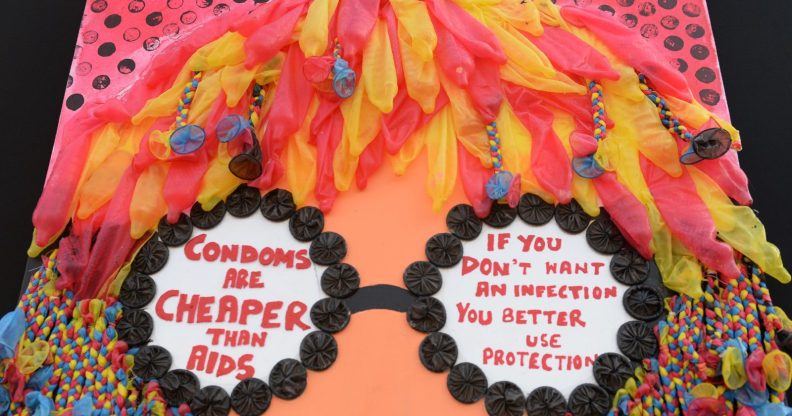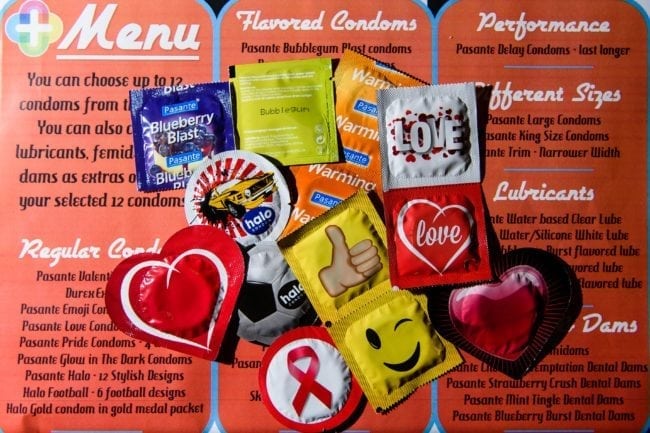People still think HIV can be transmitted through kissing and other stigmas

Condoms are displayed during an event to mark International Condom Day in New Delhi on February 13, 2017.
Condoms are displayed during an event to mark International Condom Day in New Delhi on February 13, 2017.
There are still strong misconceptions about people living with HIV, despite progress being made in treatment and prevention.
A new survey by charity HIV Scotland looked at people’s attitudes towards HIV awareness, mental health and wellbeing, and inclusive communication, and found that certain myths about the virus still fuel the stigma that surround people living with HIV.
For example, 21 percent of people still believe HIV can be transmitted through kissing or saliva exchanges, while 14 percent think it can be transmitted by coughing, sneezing and spitting.
In spite of recent progress in treatments and several awareness campaigns about HIV, only 37 percent of people said they were “well informed” on the illness and 40 percent said they had moderate knowledge on it.
3 percent admitted they didn’t “know anything about it.”

Singer Rihanna and Prince Harry prepare for a live HIV test (Chris Jackson/Getty)
Participants were then asked to rate how much they agreed or disagreed with statements on HIV presented to them.
46 percent of respondents agreed with a statement reading: “The information I get on HIV comes from TV and read in newspapers.” 8 percent strongly agreed.
Only 42 percent of respondents agreed that they would know where to get treatment if they were ever diagnosed with HIV.
99 percent of people said they did know HIV can be transmitted through sharing needles. 98 percent were aware it can be transmitted through unprotected sex.

A selection of unusual condoms are displayed at the Valentine’s Condom pop-up shop in east London (LEON NEAL/AFP/Getty)
11 percent of respondents did not know whether HIV can be transmitted through kissing or not, and 14 percent did not know whether it can be transmitted through coughing, sneezing or spitting.
The survey also looked into people’s perceptions of HIV treatment, asking participants to say if a statement was true or false, which showed that most people’s knowledge on how HIV is actually treated is limited.
47 percent of respondents did not believe a pill exists that prevents HIV infection. However, the pill, named PrEP, does exist.
The pill targets people who don’t have HIV but have higher risk of contracting it, such as partners of people that are HIV-positive.

Pre-Exposure Prophylaxis (PrEP)
More than half respondents (52 percent) did not believe that effective treatment could prevent people that are HIV-positive to pass the virus on to someone else.
23 percent of people did not believe HIV-positive women on treatment could give birth to children without passing on the virus either.
However, a large majority of participants did know that people with HIV that receive treatment have a near-normal life expectancy.
“It is dangerous that myths and outdated information remain so widespread,” said director of HIV Scotland, George Valiotis.
“Their prevalence misleads and misinforms people of the 21st century reality of HIV, and devastates relationships and lives.”
“It is time that everyone knows that HIV cannot be passed on via saliva, kissing or sharing cutlery,” he added.
Valiotis stressed the importance of informing younger generations about HIV in order to keep these myths about its transmission and treatment at bay.
All participants were given the opportunity to receive more information on HIV and its treatment, but only 20 percent said they would like to.

